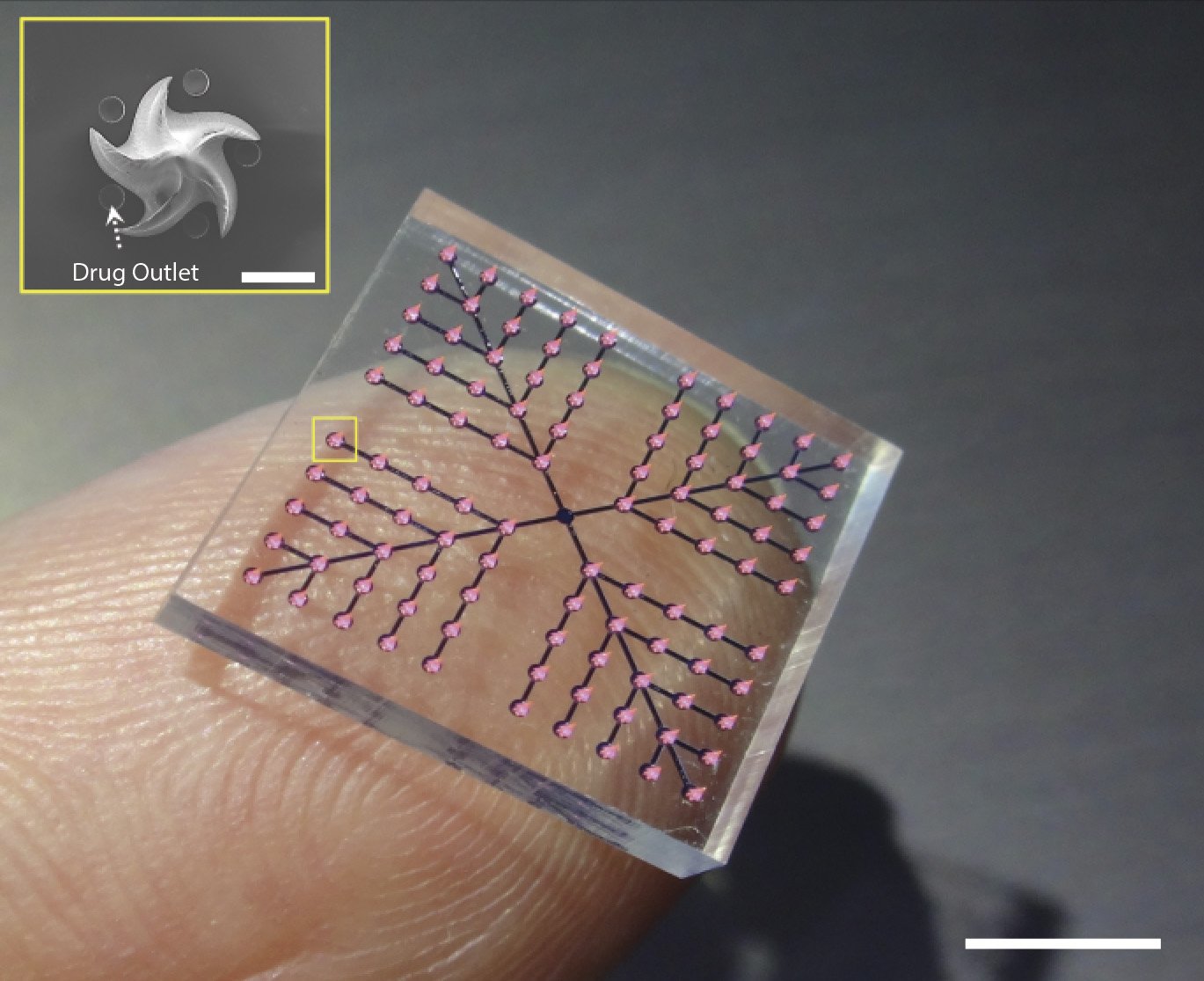Scientists have created a microneedle patch based on the fangs of a snake that can deliver therapeutic liquids and a vaccine through the skin of rodents in under 15 seconds. Their device circumvents the pumping systems and extra drug preparation steps associated with previous microneedle patches, indicating it could serve as a flexible and easy-to-use drug delivery platform.
Medicinal liquids and vaccines are usually delivered with hypodermic needles, but needles carry a risk of infection and are frequently painful. Devices that use patches of microneedles are an attractive alternative for simple and pain-free drug delivery, but existing approaches require taking additional steps to prepare medications and cannot yet effectively deliver liquid formulations of drugs.

[rand_post]
Here, Won-Gyu Bae and colleagues took inspiration from rear-fanged venomous snakes, which are equipped with a special grooved fang that can quickly inject venom into their prey. They created a patch of microneedles that contain up to six similar grooves and can deliver a variety of liquids by being applied to the skin with gentle pressure from the thumb. Importantly, their patch takes advantage of a form of liquid flow called capillary action, foregoing the need for a complicated pumping system.

[ad_336]
The team found their device could quickly deliver doses of lidocaine or an inactivated influenza virus through the skin of mice and guinea pigs, resulting in measurable immune responses that protected the animals from subsequent lethal doses of influenza virus. Bae et al. say further studies in large animal models and human volunteers testing a wider variety of liquids are needed before clinical trials can take place.
